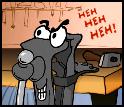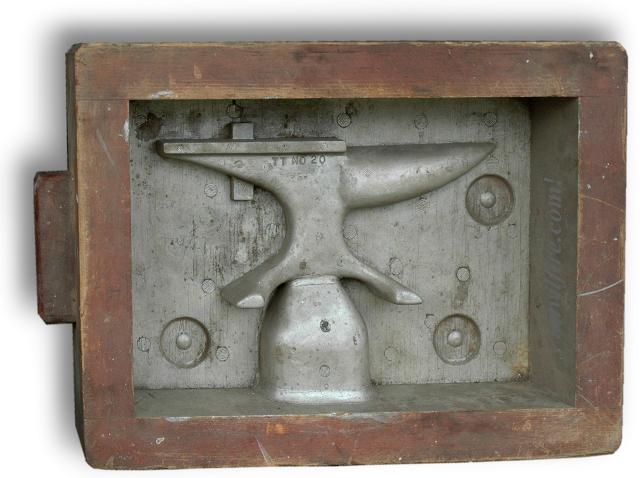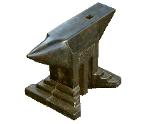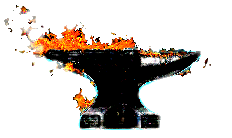|
|
| |
| |
|
|
|
|
|
|
|
|
| |
| |
| |
| |
| |
| |
| |
| |
| |
| |
|




| |
| |
|
Tell them you found it on anvilfire.com!
|
Blacksmithing and metalworking questions answered.
|
Anvils,
Amboß Amboss,
l'enclume,
incudine,
el yunque, bigornia,
städ,
incus,
aambeeld,
batente
|
|

Photo by Jock Dempsey
I photographed this mold box at SOFA Quadstate in 2005.
This is one half of a pair of boxes for making a 75 to 85 pound (34 to 38 kg ) farrier's anvil.
Foundry patterns are made and used several ways.
The above is boxed and makes half a resin bonded mold that does not require a flask.
This one also has an intergral sprue/riser.
The large size is required to supply metal as it solidifies and shrinks in the mold.
- Loose
- This is just a wooden form of the part to be made.
- Split
- This is for shapes that do not have a flat side.
Splitting a round pattern lets it sit flat and the moulder does not need to make a false cope (temporary side) or find the proper parting each time a mold is made.
- Loose with Follower board
- This is for shapes that do not have a flat side and the parting is not a straight line and would be difficult to "part" when making a mold by hand.
- Boarded
- The two halves of the pattern mounted on a board with the runners and sometime risers and sprue (pouring hole).
A boarded pattern is used in a special flask with pins to hold the board in alignment and then the pieces of the mold when reassembled.
- Boxed (above)
- Similar to boarded except the parts of the pattern are boarded as part of a box that makes a mold part with alignment surfaces or bosses.
The molds made from these are resin bonded and used without a flask.
Most foundries require this type of pattern today.
It is more work for the pattern maker and less for the foundryman. It also requires less equipment (flasks) and its maintenance.
Pattern and Mold Making iForge demos and links.
|

Split Anvil Pattern
Small two piece wood foundry pattern.

Perun Anvil Foundry Pattern
Split pattern with loose piece core. A current production pattern

Hungarian Cast Steel Anvil showing Casting Details
Cast steel anvil made in Hungary.
Casting details showing hardie hole core.

American Style Farrier's Anvil
Possibly a "Big Tex" from the 1960's.

|
|









städ, incus, aambeeld, batente